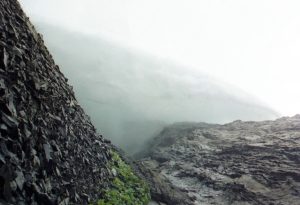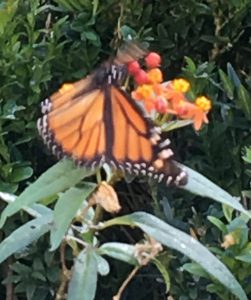Making Friends with Change – The Limbo Stage
So here we are…but where is that exactly?
We’re not where we were, that’s for sure, but nor have we arrived at our new destination.
After what for some of us will have been the uncomfortable shock of an ending, this can be an even more uncomfortable place to find ourselves, can’t it? Most of us dislike, even hate, uncertainty, unfamiliarity, the unknown. Just get me there, we cry. Who we’re calling out to is often not clear either.
We might like to simplify things and reduce the impact of a change by comparing it to crossing from one side of a street to another, best done as quickly as possible. Tempting but unhelpful.
Clarity
Rather than think of crossing a street, think of hiking an unfamiliar route when mist and fog descend. Even if you’ve never done that, you can imagine that a map showing the route is no longer much use.
Which way now? How do I know? This is where a compass can help. Leaving the hiking image behind, what can we use now as a compass of our life?
One common reaction to this stage is to hurry back to where we’ve come just from. Another is to rush headlong, blindly into the new. One more: follow someone who seems like they know what they’re talking about and please tell me what to do!
It takes Time
Patience, tolerance, resilience are helpful qualities to call upon now as well as developing a personal vision of what may not yet exist. To develop this, for most of us, takes time. Remembering Bridges’ model, these stages are not neat boxes separate from each other, nor are they strictly linear. I’ve been in situations where, long before I actually left, I’d left! I’m remembering jobs I’d done, relationships I’d been in, houses I’d lived in.
My body still turned up, my mind too, but my heart, my interest, my passion had all been leaving for some time. It was only a matter of time before my body followed. True for you too?
What were my clues?
Dissatisfaction allied with a belief (sometimes no more than this) or a hazy vision that there was something better. Maybe not even a vision, for that suggests a clarity that I rarely had. So how about I call it a sense then? And I’m really appreciative of those people who were tolerant of my uncertainty at such times. Without a plan, what did I call upon? I wouldn’t have used these word in the past, but I guess there was a faith, a belief and trust that what I was moving away from and towards was better than the situation I was already in.
What most of us have lost is the normality, the predictability of this stage. I’m not advocating borrowing activities from indigenous peoples or from a past long gone. No, I prefer to create ones that are of our time and sensibilities by recognising what the purpose of this stage.
There seem to be 3 elements that are important to address.
Death and rebirth
I don’t mean a physical death. Let me go to nature for a real life example. Caterpillar to butterfly. Most of the caterpillar regards its transformation not as ending but as finality. It’s only the imaginal cells of the caterpillar that hold a ‘vision’ of its glorious future which enable that to be realised.
How does this type of death show up for us?
As I wrote in the previous post , we can’t have endings without loss. That may mean a role, even an identity that we’ve become attached to: it may be income we’ve lost, a dream of a certain type of life we believed we were heading towards.
We may call this chaos (tho I prefer the older word ‘flux’), which from our previous vantage point we believe to be undesirable yet it’s the natural state from which all things new are created.
Rest and renewal
How else can we re-emerge from our ‘chrysalis’, unless we have made time to stop, be still? There have been a surge in recent years of practices that encourage us to be quiet and still: meditation, mindfulness, ‘sit spots’ in nature, for example. All created,I believe, as antidote to the pace and strain that most of us have been engaged in or been encouraged to be engaged in.
Reflection, perception and perspective
One consequence of engaging with the previous two elements allow for some contemplation about where we’ve been and where we truly want to go. Thinking, writing in a journal, drawing, painting, dancing, using clay are some ways to engage our ‘wonder brain’ as I’ve learned to call it. This combines our creativity, intuition, imagination, instinct, all of which will affect our perception of ourselves and give a different perspective on the world outside of ourselves. This will often mean that we no longer experience the world as we once did.
And it’s worth remembering that most of us have experienced these types of changes many times before in our lives already. At one time, we couldn’t walk or talk: we couldn’t feed ourselves, nor cook. Remember puberty? Leaving home? First job? Changing types of work? Starting our own family? Each time, potentially, a shift in perception of ourselves, other people and the world around us.
Where Next?
The butterfly is my answer. What is emerging from our cocoon that is different, that has to be different? Outer circumstances possibly. An inner shift, certainly. The mist is lifting. What is being revealed? We were close to an edge that would have been disastrous. Remember the origins of the word: going against our star, our true destiny, individually and collectively. Time to change course with a compass direction led by our core values.
In my next and last post on this topic, I’ll expand more on the beginnings stage.
If you want to explore how this whole topic is affecting your life, I’d be delighted to hear from you. You can contact me here.

